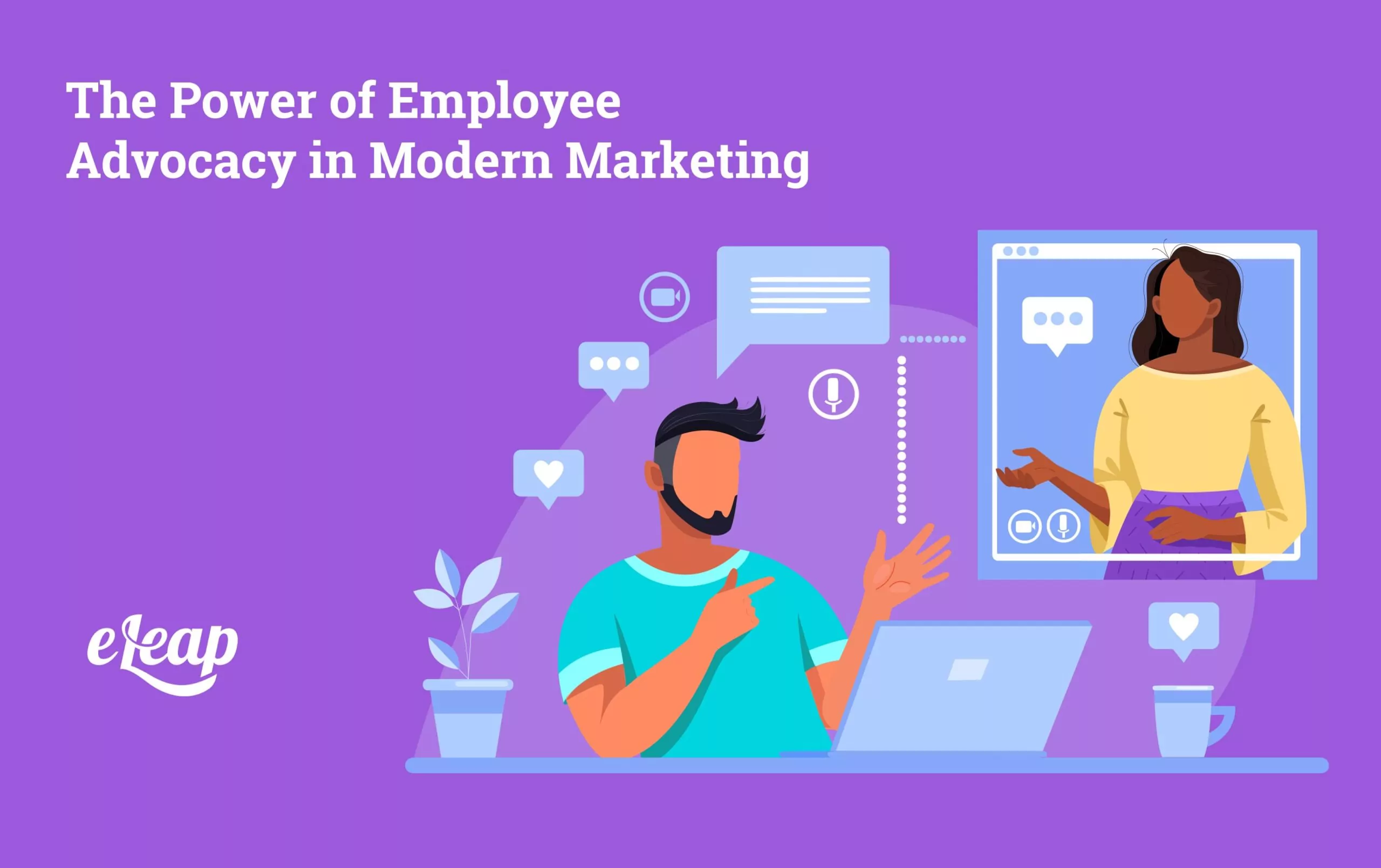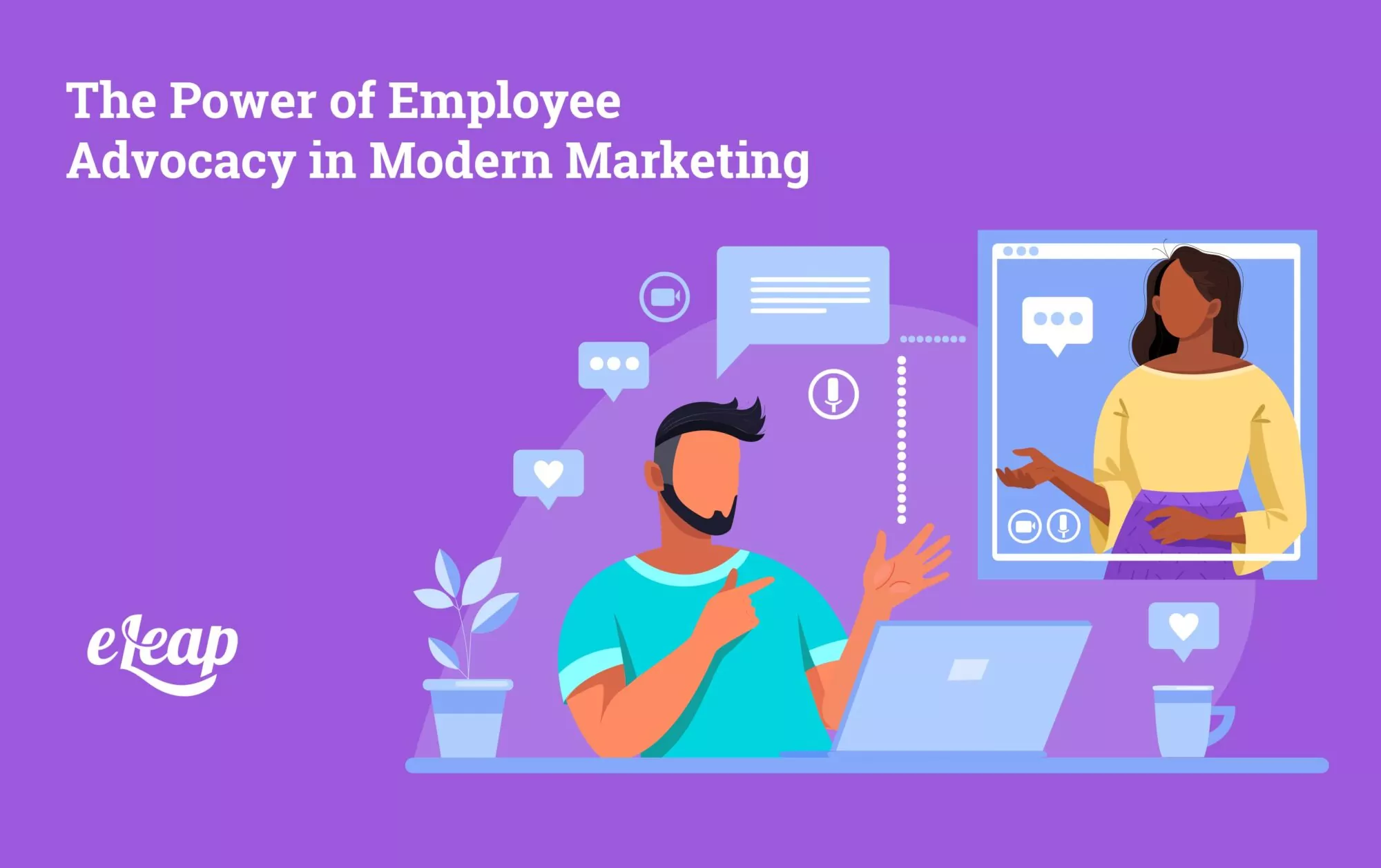The Power of Employee Advocacy in Modern Marketing

Employee advocacy has transformed from a mere buzzword into a critical strategy for companies aiming to enhance their marketing efforts. As businesses navigate an increasingly competitive landscape, leveraging the authentic voices of employees has proven to be a powerful method for building brand trust, increasing visibility, and fostering a positive corporate culture. This article explores employee advocacy, its benefits, implementation strategies, and real-world examples of success. Explore how eLeaP®’s Performance Management Platform can simplify evaluations, boost productivity, and drive measurable results.
What is Employee Advocacy?
Employee advocacy is how employees promote their company’s brand, products, or services through their networks. This process can take various forms, including sharing content on social media, speaking positively about the company in casual conversations, or even participating in corporate events highlighting the brand’s values. The essence of employee advocacy lies in the authentic representation of a company by those who are most familiar with it—its employees.
The significance of employee advocacy cannot be understated. In a world where consumers are bombarded with advertisements, they are increasingly skeptical of traditional marketing messages. Employees, however, are viewed as trustworthy sources of information. When they share their experiences, it adds a layer of authenticity that is often lacking in conventional advertising. Employees become brand ambassadors, and their genuine endorsements can increase trust among potential customers.
Furthermore, employee advocacy contributes to a more engaged workforce. When employees feel empowered to speak about their company positively, it fosters a sense of pride and ownership. This engagement benefits the brand’s image and enhances employee satisfaction and retention. By creating an environment where employees are encouraged to share their stories, organizations can cultivate a vibrant culture of advocacy that resonates internally and externally.
Why Employee Advocacy Matters in Today’s Marketing Ecosystem
Employee advocacy is increasingly essential in today’s marketing ecosystem for several reasons. First and foremost, trust plays a pivotal role in consumer decision-making. Research shows that consumers are more likely to trust recommendations from friends, family, or acquaintances than traditional advertisements. A Nielsen study indicates that 92% of consumers trust recommendations from people they know over any other form of advertising. This statistic underscores the power of employee voices in shaping perceptions and influencing buying behavior.
Additionally, employee advocacy is essential for increasing brand awareness. When employees share content about their organization, they tap into their networks, which can significantly extend the reach of the brand’s messaging. This organic exposure attracts new customers and creates a sense of community around the brand. Employees sharing their experiences can spark conversations that increase interest and engagement with the company.
Moreover, employee advocacy helps to humanize a brand. In an era where consumers increasingly seek authenticity, having real people share genuine stories about their experiences can bridge the gap between a corporate entity and its audience. This connection fosters loyalty and can lead to long-term customer relationships aligned with the company’s values.
Furthermore, employee advocacy can lead to improved internal culture. When employees feel that their voices matter, they are more likely to be engaged in their work and aligned with the company’s mission. This internal alignment creates a more cohesive and motivated workforce, ultimately benefiting the brand’s external perception.
The Transformative Benefits of Employee Advocacy

The advantages of employee advocacy extend beyond mere brand visibility and trust. One of the most significant benefits is the enhancement of employee morale. When encouraged to promote their company, employees feel valued and appreciated. This sense of recognition can lead to higher job satisfaction and reduced turnover rates. In an environment where employees are engaged, productivity tends to soar, which can directly impact the bottom line.
In addition to improving employee morale, employee advocacy provides a cost-effective marketing solution. Traditional advertising methods can be expensive and often yield unpredictable results. In contrast, leveraging employees as advocates allows companies to generate significant engagement without the high costs associated with traditional marketing campaigns. The content shared by employees is perceived as more relatable and trustworthy, leading to higher engagement levels than paid advertisements.
Another transformative benefit of employee advocacy is the enhancement of brand reputation. In a landscape where consumers are increasingly concerned about corporate transparency and authenticity, employee advocacy offers a way to showcase a company’s values. Employees sharing their positive experiences builds credibility and reinforces the company’s commitment to its workforce and customers. This authenticity is essential in today’s market, where consumers are more likely to support brands that align with their values.
Lastly, employee advocacy can significantly improve recruitment efforts. Companies known for engaging employees who speak positively about their experiences are more likely to attract top talent. Prospective candidates seek out environments where they can thrive and feel valued. Employee advocacy serves as a testament to a company’s culture. This genuine representation can attract suitable candidates aligned with the company’s mission and values.
Essential Elements of an Effective Employee Advocacy Program
Creating a successful employee advocacy program requires careful planning and execution. First and foremost, organizations must set clear objectives and key performance indicators (KPIs) to measure the program’s effectiveness. This stage could include metrics such as increased social media engagement, higher website traffic, or improved brand sentiment. Establishing these goals early on provides a roadmap for the program and helps assess its impact over time.
Another critical component is empowering employees through training and resources. Providing employees with the necessary tools and knowledge to share content effectively is essential for fostering a culture of advocacy. This step could involve training sessions on social media best practices, access to marketing materials, and resources that highlight the company’s mission and values. Employees who feel equipped to share their stories are more likely to participate actively in advocacy efforts.
Leveraging technology is also vital for the success of an advocacy program. Many organizations utilize platforms that facilitate content sharing and track engagement metrics. Implementing these tools can simplify employee advocacy and provide valuable insights into the program’s effectiveness. Companies can increase participation rates and drive engagement by making it easy for employees to share content.
Tracking success through analytics and feedback loops is essential for continuous improvement. Regularly assessing the effectiveness of the advocacy program allows organizations to make necessary adjustments and enhance their strategies. This iterative process ensures the program aligns with the company’s goals and employee interests.
Moreover, creating a supportive environment is fundamental. Organizations should cultivate a culture that encouraging employees to share their stories without fear of judgment or backlash. This supportive atmosphere fosters open communication and reinforces the importance of advocacy within the company.
Strategies for Cultivating Employee Advocacy
Cultivating employee advocacy begins with creating an environment where employees feel valued and encouraged to share their thoughts. Open dialogue is crucial in this regard. Organizations should actively seek employee input and demonstrate that their voices matter. Companies can foster a sense of belonging that encourages advocacy by creating channels for feedback and conversation.
Recognizing and celebrating advocates is also essential. Acknowledging employees who actively promote the brand can inspire others to follow suit. This recognition could take many forms, from internal shout-outs to more formal rewards for outstanding advocacy efforts. When employees see their peers being celebrated for their contributions, it reinforces the importance of advocacy within the company culture.
Developing engaging content is another vital strategy. Organizations should focus on creating content that resonates with employees and their networks. This process includes educational, entertaining, and promotional materials employees feel excited to share. By providing a variety of content types, companies can cater to different preferences and encourage broader participation in advocacy efforts.
Establishing a supportive framework that includes leadership involvement is crucial. When leaders actively participate in advocacy initiatives, it sends a strong message about the company’s commitment to the program. Leadership engagement can also help bridge the gap between employees and management, fostering a more collaborative environment.
Additionally, providing guidelines and best practices for employees helps ensure that the content they share aligns with the company’s values and messaging. Clear guidelines can help employees feel more confident in their advocacy efforts and maintain the brand’s integrity. Companies should empower employees to be themselves while aligning their messaging with the organization’s goals.
Overcoming Challenges in Employee Advocacy
Despite its numerous benefits, employee advocacy comes with challenges that organizations must navigate. One significant hurdle is addressing participation resistance. Some employees may feel uncomfortable sharing content or fear potential repercussions. Organizations should create a supportive environment that encourages participation without pressure to overcome this resistance. Open conversations about the benefits of advocacy help alleviate concerns.
Aligning advocacy efforts with company values is another challenge. It’s essential that employees feel a genuine connection to the brand they are promoting. Advocacy efforts can fall flat if there’s a disconnect between the company’s stated values and employees’ experiences. Organizations should prioritize transparency and ensure employees know the company’s mission and values. This alignment fosters a more authentic and passionate approach to advocacy.
Maintaining authenticity in employee voices is also crucial. While companies may provide guidelines and resources, it’s essential that employees feel free to express their genuine thoughts and experiences. Overly scripted or polished content can come across as inauthentic, undermining the very purpose of advocacy. Encouraging employees to share their unique perspectives ensures that the advocacy efforts resonate with audiences.
Another challenge is measuring the effectiveness of advocacy efforts. While engagement metrics are valuable, they only sometimes capture the full impact of employee advocacy. Organizations should strive to develop comprehensive metrics encompassing quantitative and qualitative success measures. This process could include employee satisfaction surveys, customer feedback, and brand sentiment analysis.
Inspiring Case Studies of Employee Advocacy Success
Examining real-world examples of successful employee advocacy can provide valuable insights for organizations implementing similar strategies. One notable case is Dell Technologies, which has effectively utilized employee advocacy to enhance its brand presence. Dell has expanded its reach by encouraging employees to share their expertise and experiences on social media. The company provides resources and training to empower its employees, resulting in increased engagement and a stronger brand image.
eLeaP has also demonstrated the power of employee advocacy by actively involving its workforce in sharing insights about learning and development. Through a structured advocacy program, eLeaP empowers its employees to promote the importance of training and education. This initiative has increased brand visibility and positioned eLeaP as a thought leader in the industry. The company’s emphasis on employee-generated content has led to higher engagement levels and strengthened its reputation as a leader in the field.
Conclusion
Employee advocacy is a powerful tool that can significantly enhance a company’s marketing efforts. By empowering employees to share their authentic experiences and insights, organizations can build trust, increase brand visibility, and foster a positive workplace culture. The benefits of employee advocacy extend beyond marketing, impacting employee morale, engagement, and retention.
To successfully implement an employee advocacy program, organizations must focus on clear objectives, empower employees through training and resources, and leverage technology for effective content sharing. By cultivating a culture of advocacy and addressing challenges, companies can unlock the full potential of their workforce as brand ambassadors.
As the marketing landscape continues to evolve, the importance of genuine voices in promoting brands will only grow. Embracing employee advocacy is not just a strategy; it’s a way to connect authentically with audiences and build lasting relationships. Companies like eLeaP are prime examples of how fostering employee advocacy can lead to meaningful engagement and success. By prioritizing this approach, organizations can navigate the complexities of modern marketing with confidence and authenticity.